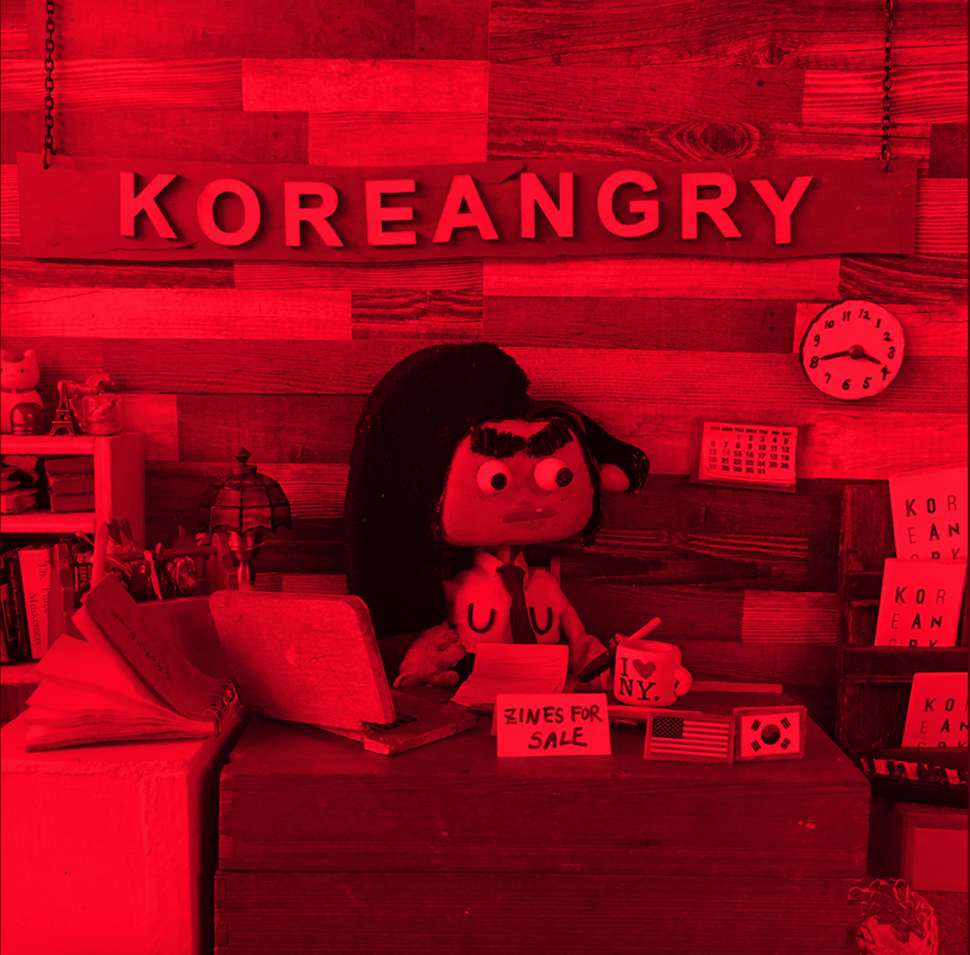In Koreangry comic artist Eunsoo Jeong’s first sketches of her zine persona, she scribbles down the portmanteaus of emotions that she feels as a Korean American woman. As Jeong brainstorms through the right Goldilockian “fit” for her protagonist-alter-ego-self with a hyphenated cultural identity, it’s only fitting that her emotions, too, flail around in a space of hybridity.
Here in this early sketch pad, Koreangry is born: a woman with a square jaw, dark hair, lopsided hair part, angry arched block brows. She wears a white blouse, black pencil skirt, and a tie. She is angry and she is Korean American. “I wish I had a dick so I can make sweet gentle love to all the woman that deserve,” she scrawls. It reads like a hiss. In these early sketches, we get a glimpse of the bitter, explosive sentiments behind the artist. For all these reasons, my first encounter with the Koreangry zine in San Francisco’s City Lights Bookstore left me stunned — a zine where the anger of a Korean American woman gave no fucks.
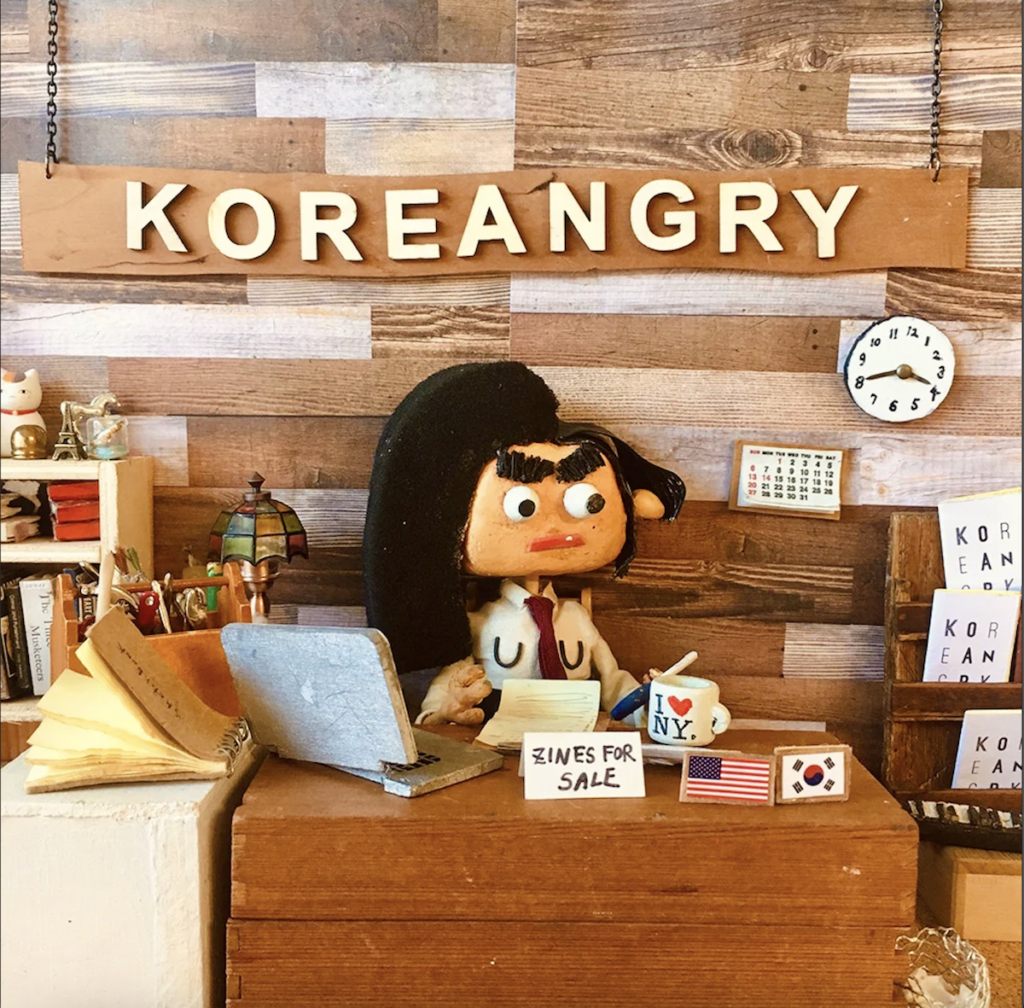
Eunsoo Jeong, the Los Angeles based Korean American artist behind the zine Koreangry, created the zine in 2016 after the U.S. presidential election. A former Deferred Action for Childhood Arrivals (DACA) recipient after emigrating from South Korea to California when she was thirteen, Jeong was overcome with feelings of anxiety after being laid off. In an interview, Jeong speaks about her long-time mental health struggles due to her precarious immigration status: “I lived undocumented for nearly a decade and I still suffer anxiety in the middle of the night. I get random bursts of nervousness where I’m like OMG. I used to scream in the middle of the night and had night terrors where I would wake up in a cold sweat. That fear and anxiety is still very much a part of my life, but I think I’m better at living with it. My comic has helped so much, it has helped to calm my nerves.” Koreangry was not only beneficial as a form of art therapy, but as a way for Jeong to wrest artistic control to express their emotions that could not be disentangled from relation to race, citizenship and nationality, and gender.
When we’re habituated to certain media representations of communities, such as the fragility, the docility, the muteness of the Asian woman, we become sedated to how imagery lends itself to ideology. In her book Ugly Feelings, affect theorist Sianne Ngai argues that “to be ‘animated’ in American culture is to be racialized in some way.” For example, in American literature and visual culture, “the kind of exaggerated emotional expressiveness,” of over-the-top enthusiasm, gesticulating movements, or hot-blooded temper — all of which qualify as animatedness — “see[m] to function as a marker of racial or ethnic otherness.”
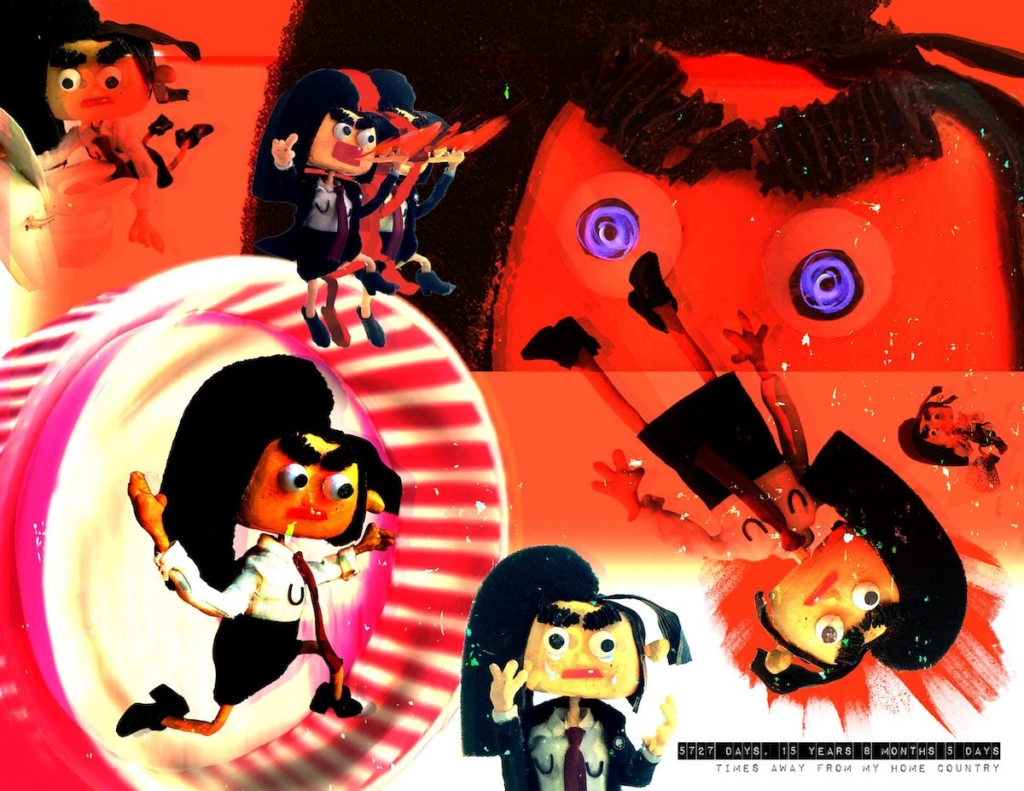
In American visual culture, Black bodies are made a spectacle of emotional responsiveness in Uncle Tom’s Cabin, the unruliness of Black female bodies sensationalized as was Sarah Baartman’s, and on the flip-side, Asian bodies made robotic, silent, and emotionally neutral subjects of de-animatedness. Ngai likens the animating of the Other with the act of puppeteering, using emotional acts to support and mobilize the audience to believe in something. Eunsoo Jeong’s own caricature, her exaggerated language and brutishness, wakes up the comic reader to critically reflect on the ways racialized animatedness has worked its way into changing how we read comics.
But why is she angry? Simple: Koreangry is angry about the reversal of Roe v. Wade, deportation of undocumented immigrants, Soon Ja Du’s 1991 murder of Latasha Harlins, Asian fetishists, sexists, Trader Joe’s Asian food, white supremacy, surprise periods, toxic masculinity, being an artist, white dicks, American military bases on the Korean Peninsula, and more.
I read Koreangry as the alter ego of artist Eunsoo Jeong. She embodies a voice that feels not justified to be expressed, nor listened to, in real life — a crucial imaginative potential for comics. This is also a pattern that I’ve noticed in cartoons like Lela Lee’s 1998 animated show Angry Little Asian Girl, which emerged out of Lee’s frustrations about sexist and racist animations. Her Korean American protagonist is a young schoolgirl named Kim and creator Lee admits, “The character is sort of based on me, and I had a bit of a short temper, where I was just really mad at the world for the imperfect world that we all sort of inherited. And sort of mad at the illusions that my parents and teachers and my schools had sort of fed to me.”
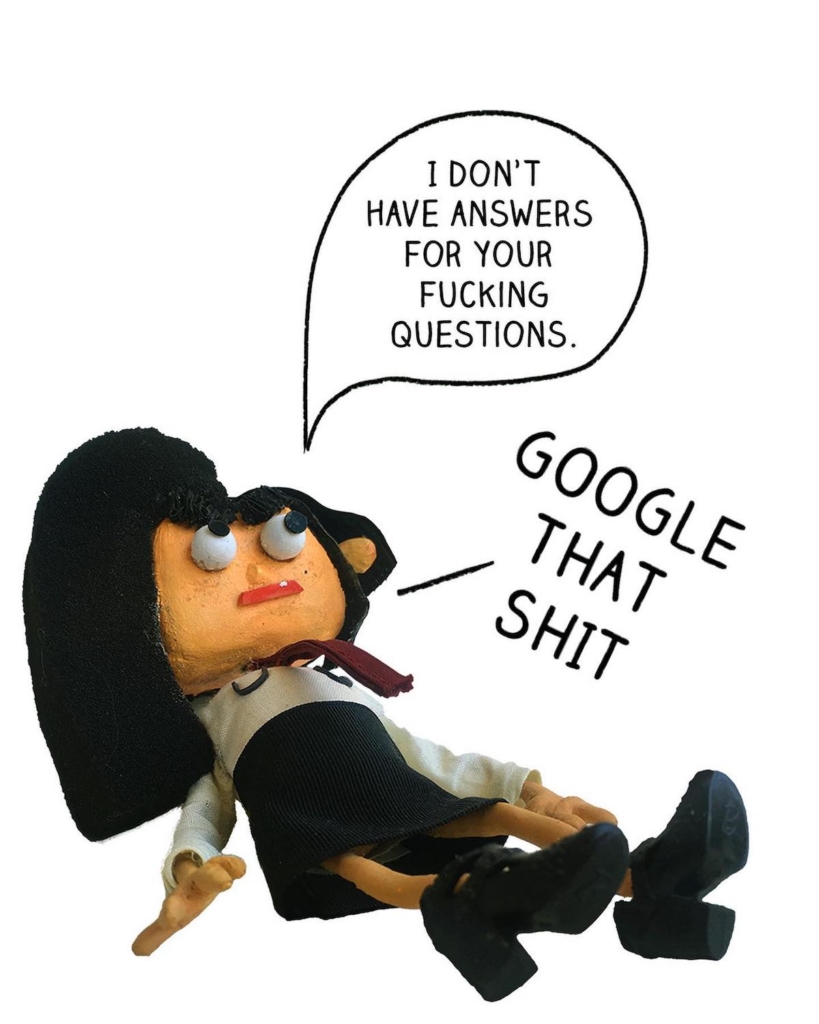
Critics always preface that Lela Lee’s character Kim is extremely cute as she is extremely angry. In an interview with Lee, she says, ‘“That’s the beauty of animation. Because it’s a cute, small character, it diffuses it more than if it was actually me talking.’” When Kim gets angry, her eyes, neutrally round, turn into angry lines slanted downwards, transforming the cute into the demonic. In an early cartoon, when Kim’s new grade school teacher compliments Kim’s “good English,” Kim explodes: “I was born here, you stupid dip s*?%@! Don’t you know anything about immigration? Read some history books, you stupid ignoramus!”
Lee hides aggression within the folds of cuteness of which scholar Anne Cheng points out, “Asian female anger exists on the American public stage in a peripheral, miniaturized, and cutified cartoon version.” Cheng argues that the Orientalist trope of the Asian woman and her sexual fetishization force her anger to be rendered as merely decorative.
That’s why some readers and critics never take the Angry Little Asian Girl’s anger seriously. One critic, Kevin Thomas, describes Kim’s “unleashed rage is at once hilarious — so much tough talk from such a little girl.” This infantilization undercuts the real significance of this anger founded on racial and gendered injustice. The angry Asian woman can be angry, but her anger is amusing because it’s vocalized by a non-threatening body.
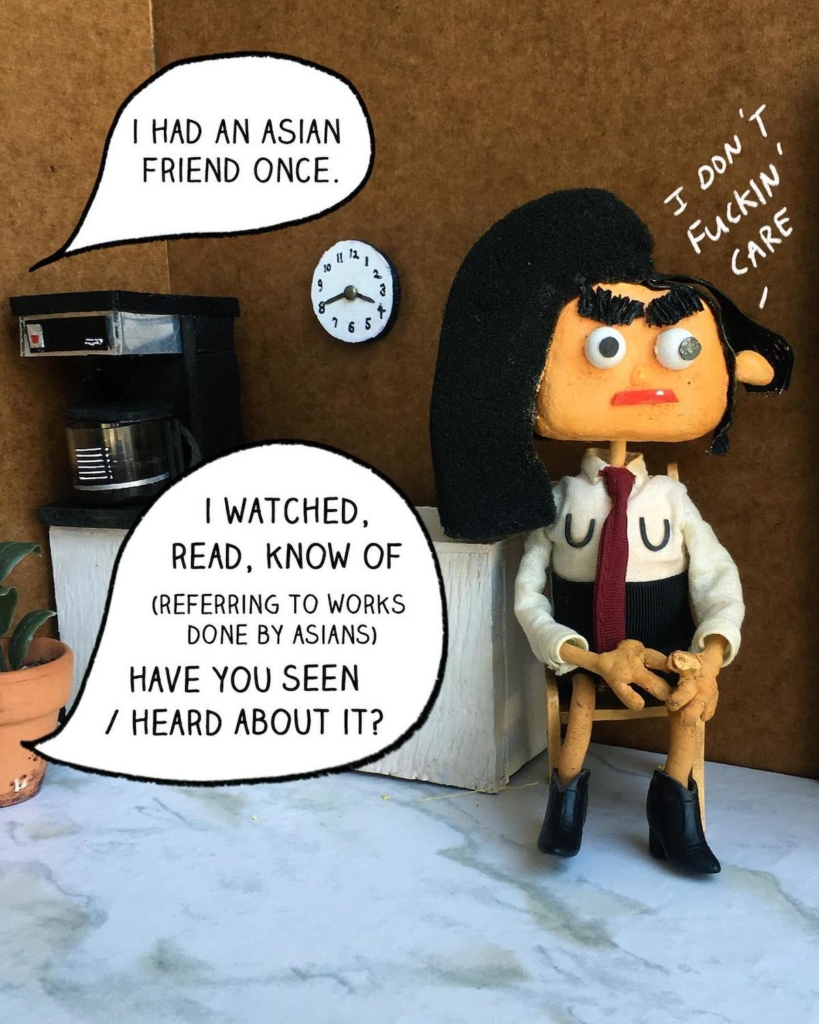
Yet in contrast, existing negative stereotypes of the comparative “angry Black woman” caricature are racist, derogatory, misogynistic ways to label and to punish Black women for being a “threat” to whiteness and patriarchy. The targets of the angry Black woman include white men, Black men, white women, the federal government, police. She is provocative and leaves those in power with uneasiness. Media responds by defusing the Black woman; to dismiss her anger as irrational.
That leaves us at an impasse with the ways that anger and racialized animatedness confound each other. How does the cartoonist express the anger of Asian women that an audience will never really consider angry because it always looks adorable? How does the cartoonist express the anger of Black women that an audience will flippantly brush off as a groundless emotional state? And what does it mean for these Korean American artists to try to embody an emotional caricature that for other women, has become another harmful stereotype?
What Eunsoo Jeong is doing in her work is challenging the very place of anger in comics. She grounds anger in history, a way to legitimize where the feeling comes from when the person feeling angry is never a subject of empathy. Koreangry also exposes our layers of differential treatments of racialized anger. When Korean American women artists author their own exaggerated portraits of anger and fury, we must recognize that they do this for different reasons than Black women artists cannot.
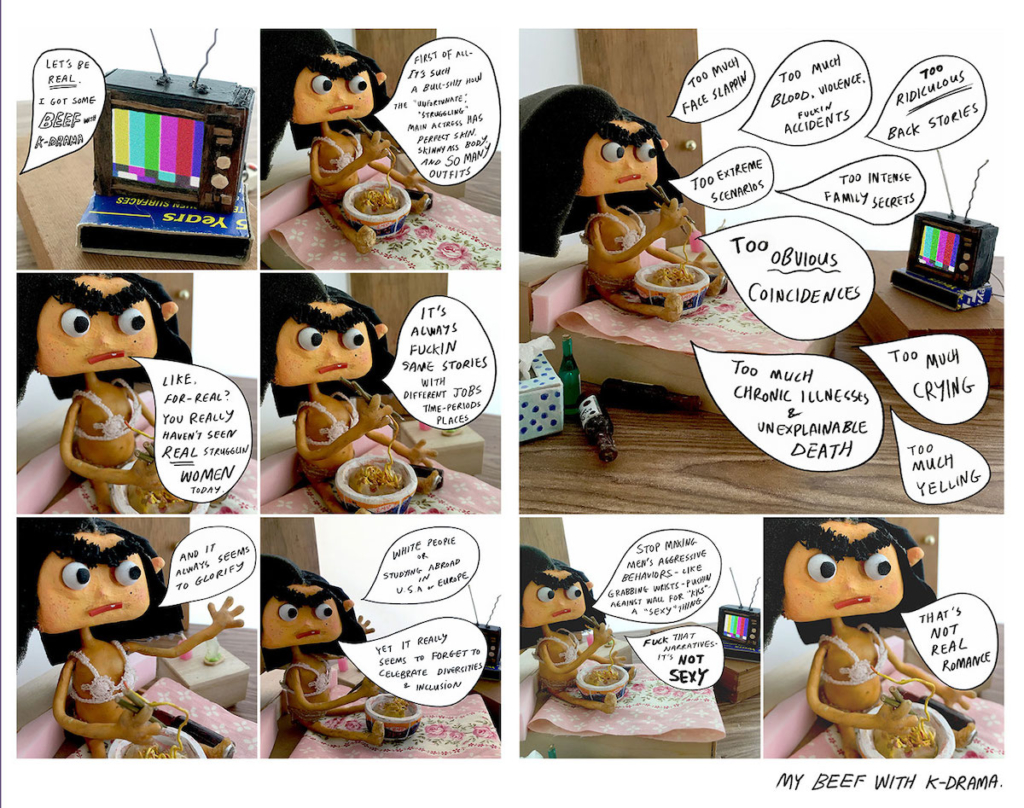
Looking back at the targets of Koreangry and Black women’s anger, we can see how much of the systems of power they’re both subjected to are openly shared. In June 1981, Audre Lorde gave a speech entitled “The Uses of Anger”: “I am not free while any woman is unfree, even when her shackles are very different from my own. And I am not free as long as one person of Color remains chained.” Just as Eunsoo Jeong’s comics are informed by her politics and vision for coalition and liberation, the very nature of anger as represented by visual media remains entangled with racial, sexual, gender, and class injustice.
While grounded in an autobiographical reality, Koreangry finds creative liberation in representing the world as Eunsoo Jeong sees it. Inspired by her favorite childhood Wallace and Gromit animated series, Jeong uses clay to create three-dimensional models of her Koreangry world. She manipulates the clay figure’s movable limbs, like bending her legs when she sits down, bending her elbow to wave at the reader. By physically animating her characters, Jeong opens up the gestural possibilities. She wrests control over how the Koreangry protagonist emotes through her body.
But unlike true animation, Jeong’s Koreangry zine is created by taking photographs of the three-dimensional figure in various positions and settings, and frozen in a specific motion to be printed in a two-dimensional insert. This fragmented animation enables multiple forms of narratorial authority to exist. Jeong can puppeteer her clay figurine’s limbs and she can choose the specific shots in which to take photographs from. Jeong authors the character and she authors the world her character lives in. That’s why carefully designed props and sets make up Koreangry as much as the character and her anger.
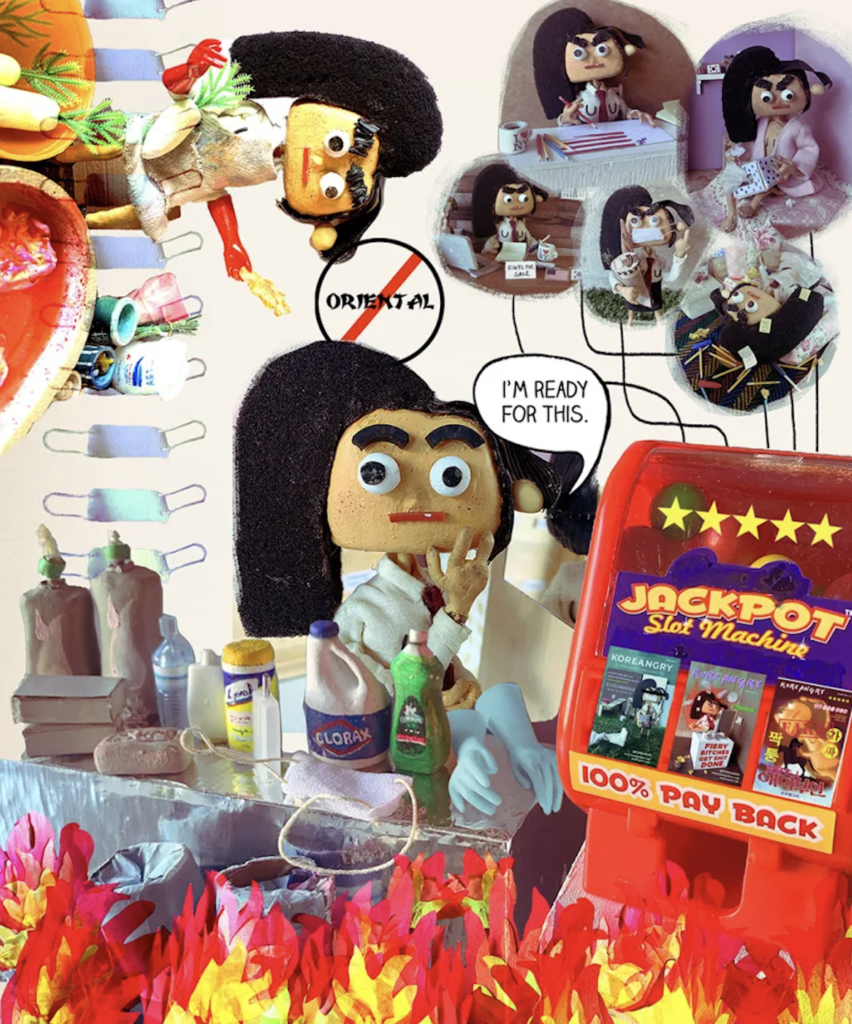
In one interview, Jeong says “During college, I took a CSU Summer Arts program for toy design and stop-motion. I really enjoyed hand-made props and armature. I like building things using recycled materials and experimenting with different mediums. I like that my puppet/armature is completely imperfect and bit grimy—just like the content of my work, which is a bit smutty and sarcastic. Building small props and sets for the world of Koreangry and physically seeing the work just gives me joy.”
The backdrop for Koreangry is composed of clay miniatures, including Korean instant ramen, the signature green glass soju bottles, LA kalbi (Korean short ribs), Yakult, and banana milk that Korean aunties carry in delivery carts around Korea. As a reader familiar with all these objects, I viewed Jeong’s Koreangry sets as shared nostalgic archives of our childhoods. Surely, these items would look quotidian and mundane to readers who don’t attach emotional tenderness to them. That’s where I found value in being a comic reader who is given a text that speaks directly to me and my cultural knowledge.
Although the primary emotion that Koreangry coalesces around is anger, I couldn’t help but laugh along with the levity of the zine. Jeong’s world is playful, which she echoes in her ethos of humor. She acknowledges with hope: “I want to make more work that’s uplifting and funny. I use humor to make light of hard situations. I don’t want people to be depressed by my work and it wouldn’t feel good for me either, so let’s just make fun of this weird situation that we are all in together.” Anger and joy seem to exist in such polarity, but Jeong’s zine exposes how fluid and transmutative these emotions actually are — especially as acts of defiance. “Every joke is a tiny revolution,” George Orwell said.
In one zine, Jeong riffs on a Playboy magazine spread:
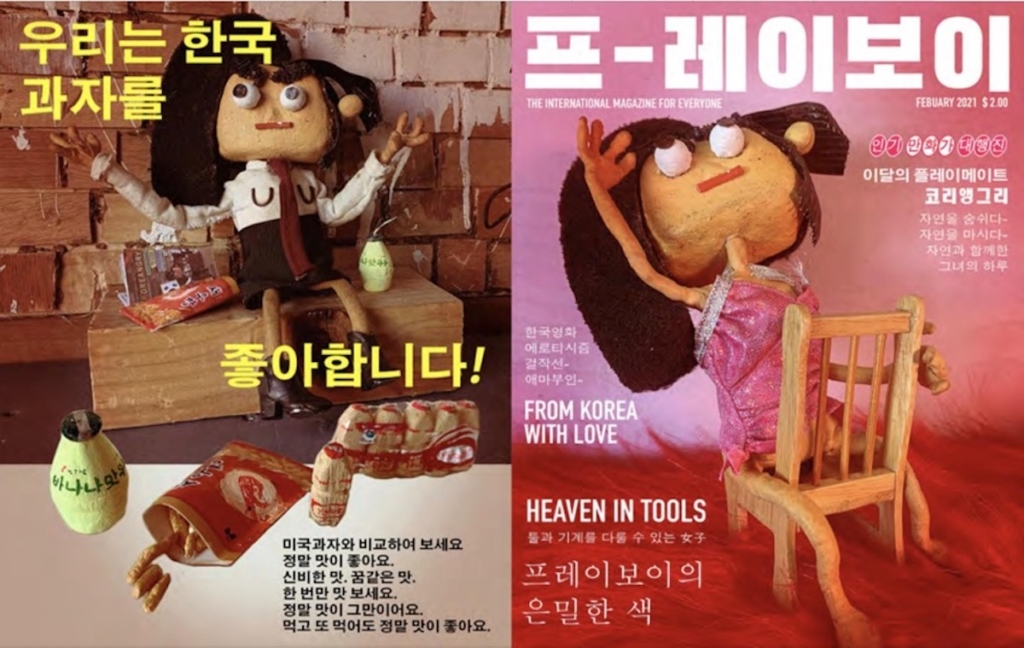
Jeong uses both Korean and English in her zine, a playful flirtation with bilingualism. The front page spread on the right says, “This month’s playmate Koreangry. Breathe nature. Drink nature. Her day with nature” (translation mine). Although it is written in the Korean alphabet, the characters mimic the phonetics of English – an adoption of “Konglish” (Korean-English) that many Korean immigrants and children of immigrants refer to as their hybridized language.
The back page spread on the left is an advertisement for Korean snacks. The bold yellow says, “We love Korean snacks!” while the bottom right text describes how American snacks are unable to compare to the tasty, addictiveness of Korean snacks (translation mine). Eunsoo Jeong does not offer translations for these pages, and includes cultural symbols — foods, brands, product placements — that could quintessentially only be understood by the Korean diaspora or other Asians. The cheeky Koreangry zine is art produced by a Korean American creative independent of any gaze but her own and other readers of the diaspora.
Ngai’s argument about racialized animatedness exposes how visibly animated bodies, “the other,” become targets of exclusion, and more specifically, through spectacle. Jeong’s Koreangry inverts this filter vis a vis the white gaze, and looks towards the inclusion and coalition that can be built between marginalized individuals. This comes by contextualizing events of fissure and conflict; reeducating for the hope of reconciliation towards progress forward.
Eunsoo Jeong details her working struggles with identity (the personal and the political) and how creating zines has allowed her to do research to understand the history she comes from and is part of shaping. In her eighth zine issue that focuses on Korean American history, Jeong conducted a six month personal research project to learn about immigration history, the Civil Rights movements, and the work of Black activists.
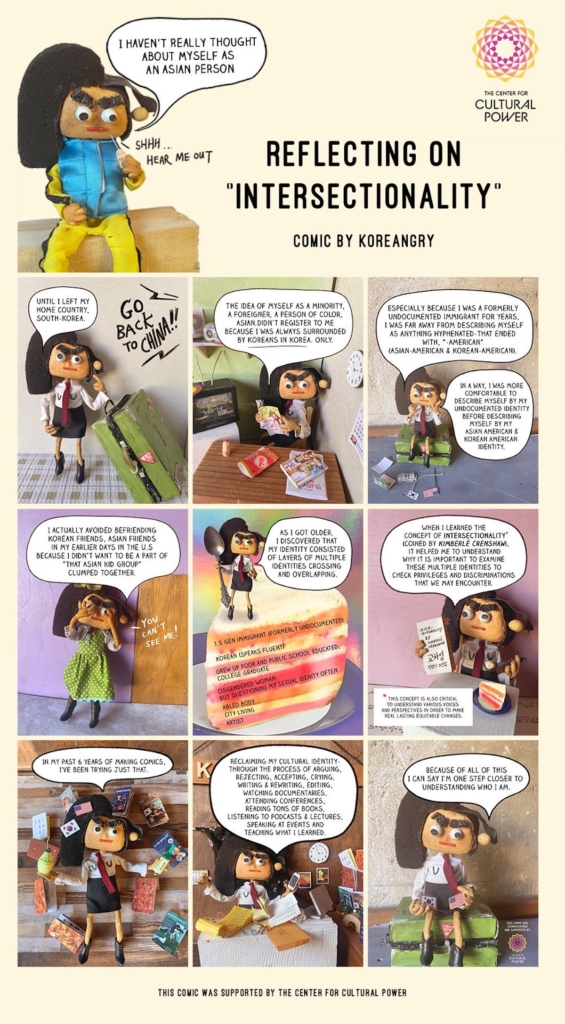
Jeong’s research moved beyond the personal and toward the aim of seeking justice: “I also understood the complexity of the older generation of Korean Americans’ fear and discomfort toward black people largely due to internalized racism and the trauma from the LA Riots in 1992. I was angry that many of the Korean journals I’d found on the riots focused on the property damage and violence, while “Rooftop Koreans” were glorified and Latasha Harlins was forgotten.
Then I thought about the older generation of Korean Americans who may be suffering from trauma and may not fully understand what the Black Lives Matter movement is about. So I drafted a letter addressing what I had learned –– I carefully researched, cross referenced, and chose specific words in the translation process as if I were talking to my own grandma. I was extremely nervous sharing this and the response was absolutely overwhelming. I had many folks who thanked me for my work and have shared it with their family members and friends. I also had many hating Korean folks who were ashamed that I was Korean.”
When zines are created to circulate around digital platforms, they tether themselves onto exigent issues and causes. The 1992 Los Angeles uprisings continue to have a centrality in Korean American history, which arose at a time of deep racial unrest between the state and Black Americans, and between communities of color along class divisions and learned prejudice. When Korean shop owner Soon Ja Du was only given probation for shooting and killing 15-year-old Latasha Harlins trying to buy an orange juice, protestors lit Koreatown ablaze with anger. For some, the uprisings deepened racial fissions, while for others, they served as a reckoning to see the oppressive carceral state as a system that would only serve itself.
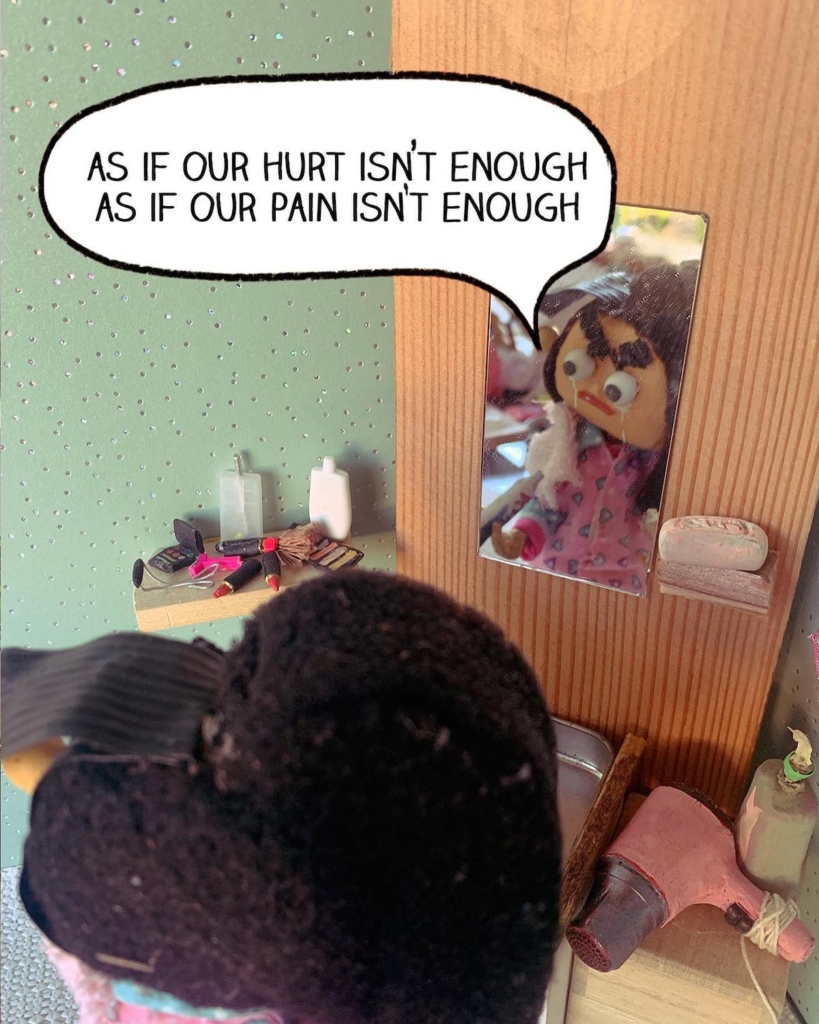
With distance and time to rebuild, the artists direct their anger now, not at their fixation of being aggrieved victims, but at the forgotten tragedy of Latasha Harlins’ murder. Korean American anger that had once been directed at Black Americans is being recuperated over time, reframing events to be independent of national agendas, and shifting towards honoring victims of injustice.
Jeong emphasizes the educational possibilities of her art, not as a tool of power, but as an act of filial love for her community. She admits, “I carefully researched, cross referenced, and chose specific words in the translation process as if I were talking to my own grandma” (emphasis mine). For Jeong, creating Korean/American art for her community is an act of care. As a result, these new imaginings and hopefulness of the Korean American community shift anger and resentment toward sympathy and empathy.
Eunsoo Jeong’s Koreangry is a zine about a character attempting this social justice work herself. In many cases, a social justice work of art can read like an instruction manual of how to feel, what to support, and what to oppose. Rather than changing a reader’s mind, these utility-oriented texts can tell a reader how to think — which is something we should be cautious about when art exists as a purposefully expansive medium without preaching moral scriptures of right and wrong.
Because Jeong grounds her zine with the personal “I” — as many zines do — Koreangry proves that social justice is best fought for by the artist reflecting her own interior emotions. Koreangry has broadened the way I think of my own anger and its sometimes traceable, sometimes irrational, many times in-between origins. Maybe not by correlating a political action, but by taking an important first step: understanding that my anger is legitimate.
